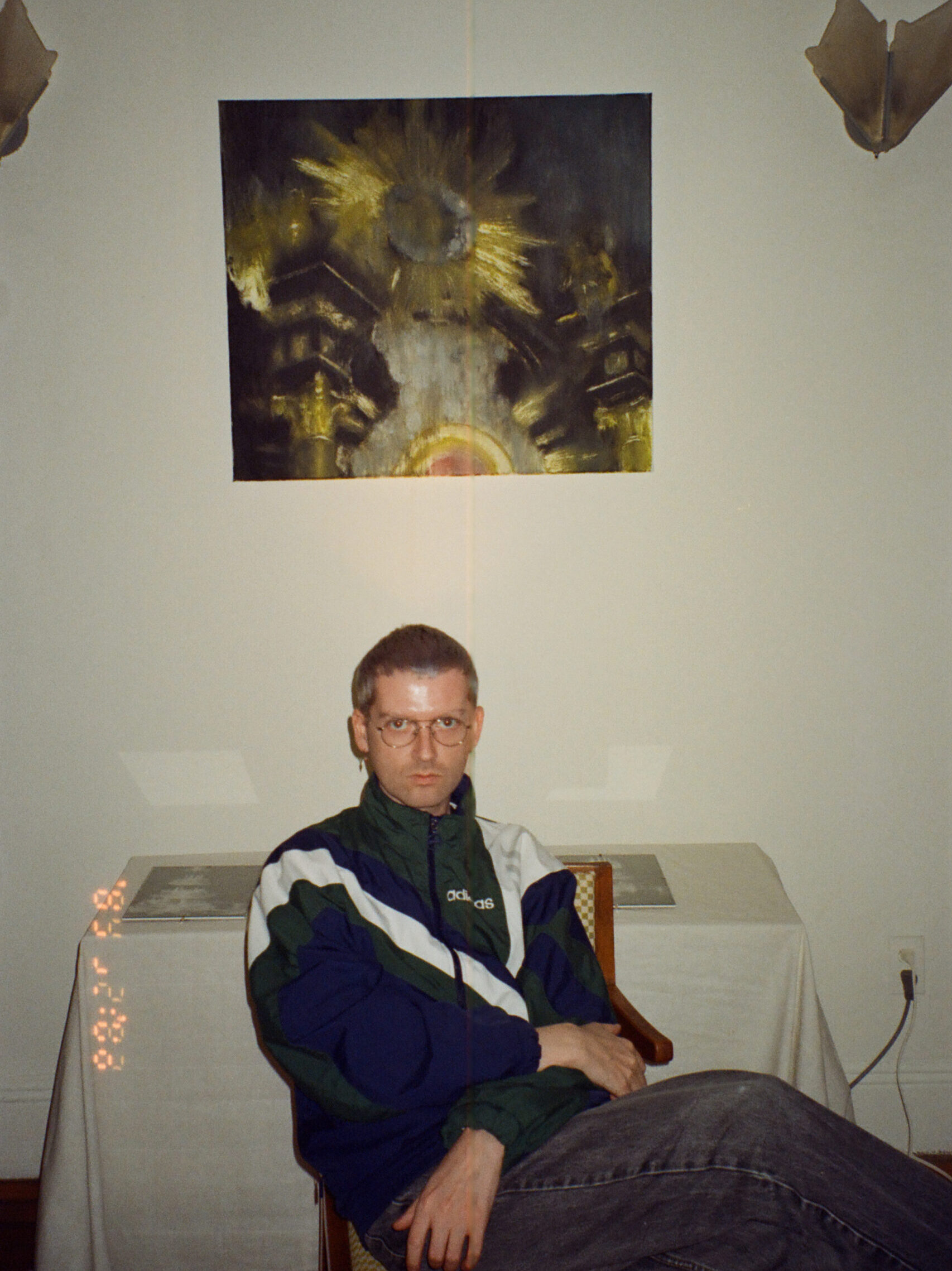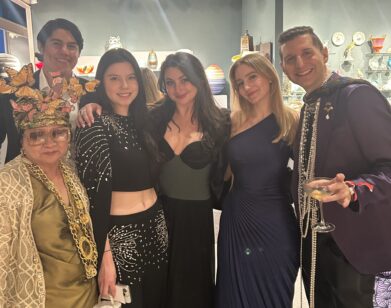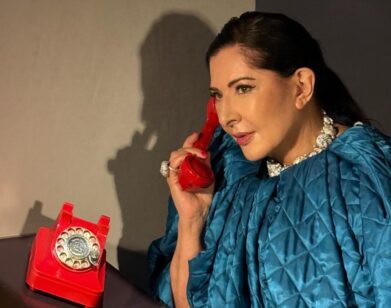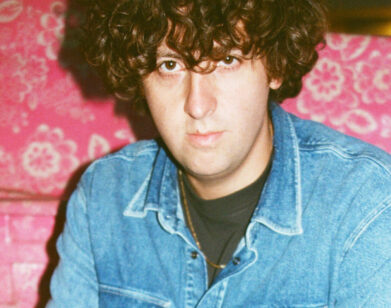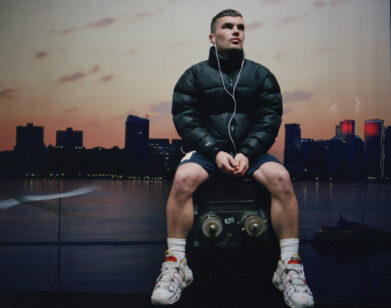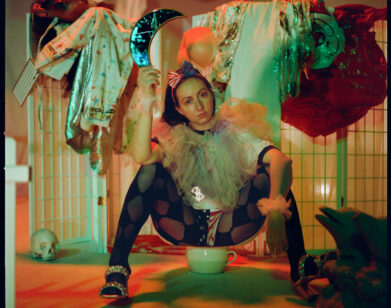IN CONVERSATION
Łukasz Stokłosa and Cristine Brache on Playboy Bunnies and Demonic Nuns
Last month, the exhibition Beautiful Fish in a Man-Made Pond was hung across the historic Wolhstetter house in L.A., the home originally designed for the arms strategist who inspired Stanley Kubrick’s Dr. Strangelove. The group show, presented by Amity, features artworks whose subjects beget other memories and associations, which the artists have tried to reimagine through a contemporary lens. This is the case for Cristine Brache and Łukasz Stokłosa, whose paintings focus in on the storied legacy of Playboy bunnies and the palatial estates of Europe’s former aristocrats, respectively. Their paintings are animated by the same morbid fascination with things that have an objective aesthetic value, but are haunted by sad and broken histories. “It feels beautiful, even if it is horrible too,” says Brache, who’s also publishing a book of poetry with Wonder Press this Summer. ” It’s important to remember that there are both sides in that image. It’s both bad and good, so it’s always your place to decide which side you are on,” echoes Stoklosa. After the group show opened, the two artists got on Zoom to talk about the how their works intersect, the disturbing legacy of Ludwig II of Bavaria, and the outbreak of demonic nun possessions in France that continues to fascinate Brache.
———
CRISTINE BRACHE: I was really happy to be introduced to your paintings. They’re very beautiful.
ŁUKASZ STOKŁOSA: I love your works, too.
BRACHE: The work is pretty haunted on both ends.
STOKŁOSA: Yes, and we often use similar sources. You also use vintage footage, right?
BRACHE: I generate my own. For some of these recent ones I used A.I. I was referencing the older film stills and then making them look how I wanted using the aesthetic of the still itself. But the work is very cinematic in terms of storytelling and frames, in order to really capture a feeling.
STOKŁOSA: Yeah. So, we have that in common.
BRACHE: Yours feel a bit noir.
STOKŁOSA: Yes. It starts from this dark movie feeling, this foggy, shadowy aesthetic. Usually I use a brighter background and then recreate it on canvas. Basically, combining some footage I found, and then recreating it in the aesthetic I want to achieve on canvas.
BRACHE: Do you have a solo show now in Dallas?
STOKŁOSA: Yes, I do.
BRACHE: Congrats. For that show, does it all feel like one made-up movie in your head?
STOKŁOSA: The title of the exhibition was borrowed from the movie, Cries and Whispers, by [Ingmar] Bergman. The atmosphere of the exhibition was inspired by the movie, and I often work like that.
BRACHE: Do you like movies a lot?
STOKŁOSA: Yes. At this show in L.A. there’s going to be a painting from the TV show, Dynasty.
BRACHE: Oh, cool.
STOKŁOSA: It’s of the cake from the wedding. I watched it when I was a kid, so it kind of defined my aesthetic choices, this flamboyant, super wealthy interior and designs. Then I watched Marie Antoinette by Sofia Coppola, and it brings me this feeling that the spaces we visit, the palaces and museums, are not only these beautiful objects we look at, but have very dark stories behind them. But it starts from movies and pop culture.
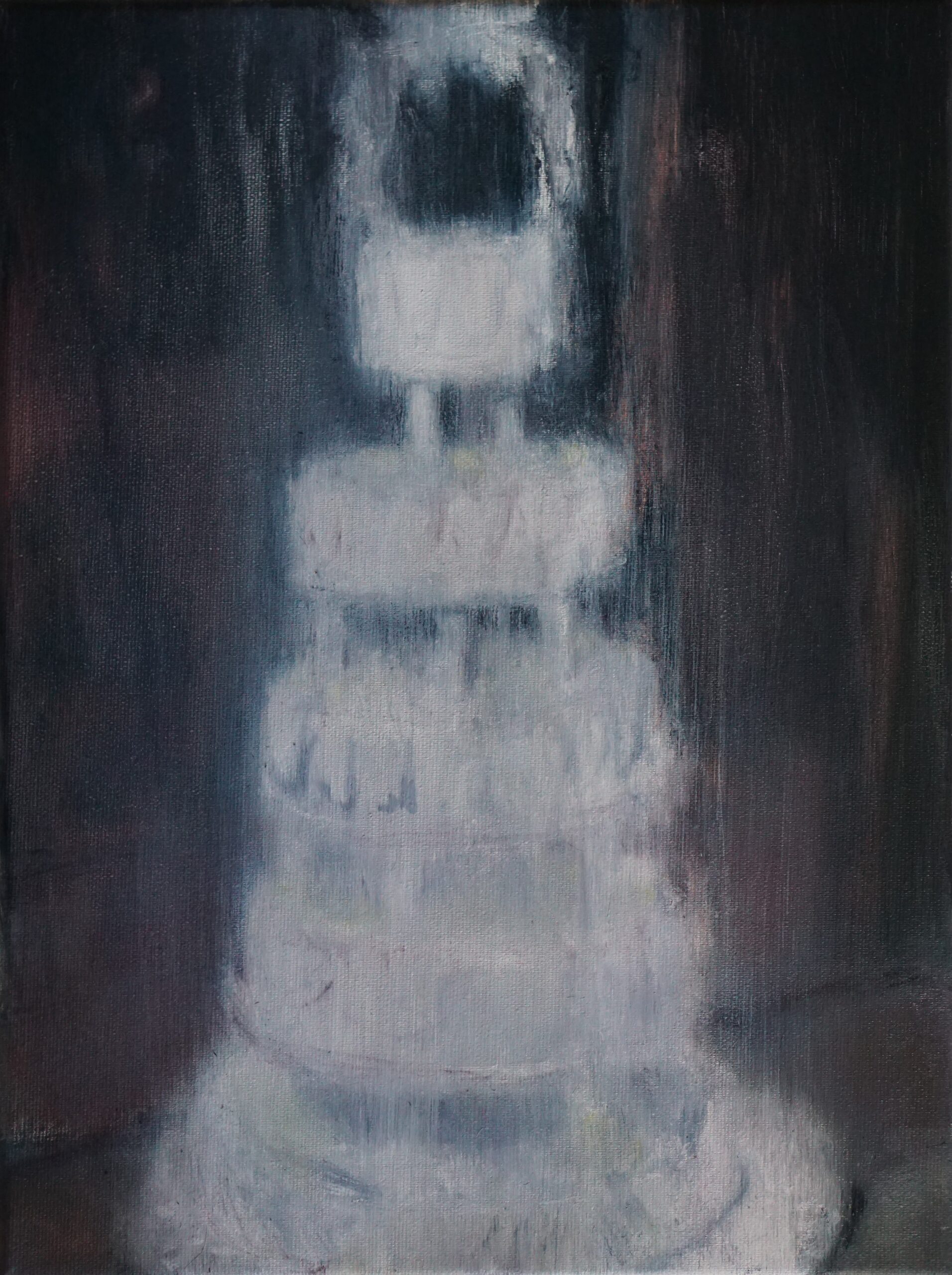
Łukasz Stokłosa, Dynasty, 2024, oil on canvas, 40×30 cm.
BRACHE: Cool.
STOKŁOSA: I see that you have one of your works behind you. What’s the subject?
BRACHE: It’s continued from my series that I did at NADA in December, which was starting with Dorothy Stratten and the Playboy Bunnies. That one’s called Purple Bunnies. I used A.I. to change the image and colors. The symbol of a woman in a bunny suit is very particular. I love Dorothy Stratten, and her biography is so tragic. I was thinking about how people perform, and I use the word performance very loosely, but the performance of how we exist on a day-to-day basis, the different layers of strata that we have with our own privacy in our own personal lives, then what goes out to the exterior. Like, she was always smiling and super happy but then at home, it was a horror. That dynamic is something I’ve been thematically mining since I started making work. When I look at the image of a woman in a bunny suit, it’s obviously manufactured for straight men. It started this mass objectification of women in this specific way that didn’t really exist before Playboy. But it looks very beautiful, so it’s complicated. But those are encaustic works. I work with silk and ink, and then I embed the silk and encaustic, and then paint oil layers on top of that. So it’s a combination of different media. And encaustic makes silk turn transparent. So the ink then floats in this one-millimeter layer, and then on top of that is the glaze. It refracts the light in a vibrant way that looks different from regular oil paintings.
STOKŁOSA: When you were talking about these beautiful images of the bunny costume, it reminded me of working with gay pornography, because I also paint these paintings with boys. It’s very similar because we have those very sexy, beautiful situations, but you know what is behind them. But I usually always use vintage porn for my work. And the interesting thing is that, at one time, that was the only place where you could see men kissing on screen, and it was accessible. So it was a place of liberation. But on the other hand, you have this exploitation of people who were basically forced to do that because of a lack of money. It’s both a feeling that something is wrong, but also that it’s so interesting and beautiful.
BRACHE: Right. It’s such a compelling feeling, to position yourself between those two spaces. Being able to hold both things that are in direct opposition to my constitution is very complex. It feels beautiful, even if it is horrible too. But comfort in discomfort is very important. Otherwise the world becomes very boring, very fast. It also betrays humanity because we all have that range within us, in some capacity.
STOKŁOSA: Yes. It’s important to remember that there are both sides in that image. It’s both bad and good, so it’s always your place to decide which side you are on. Sometimes, it’s impossible.
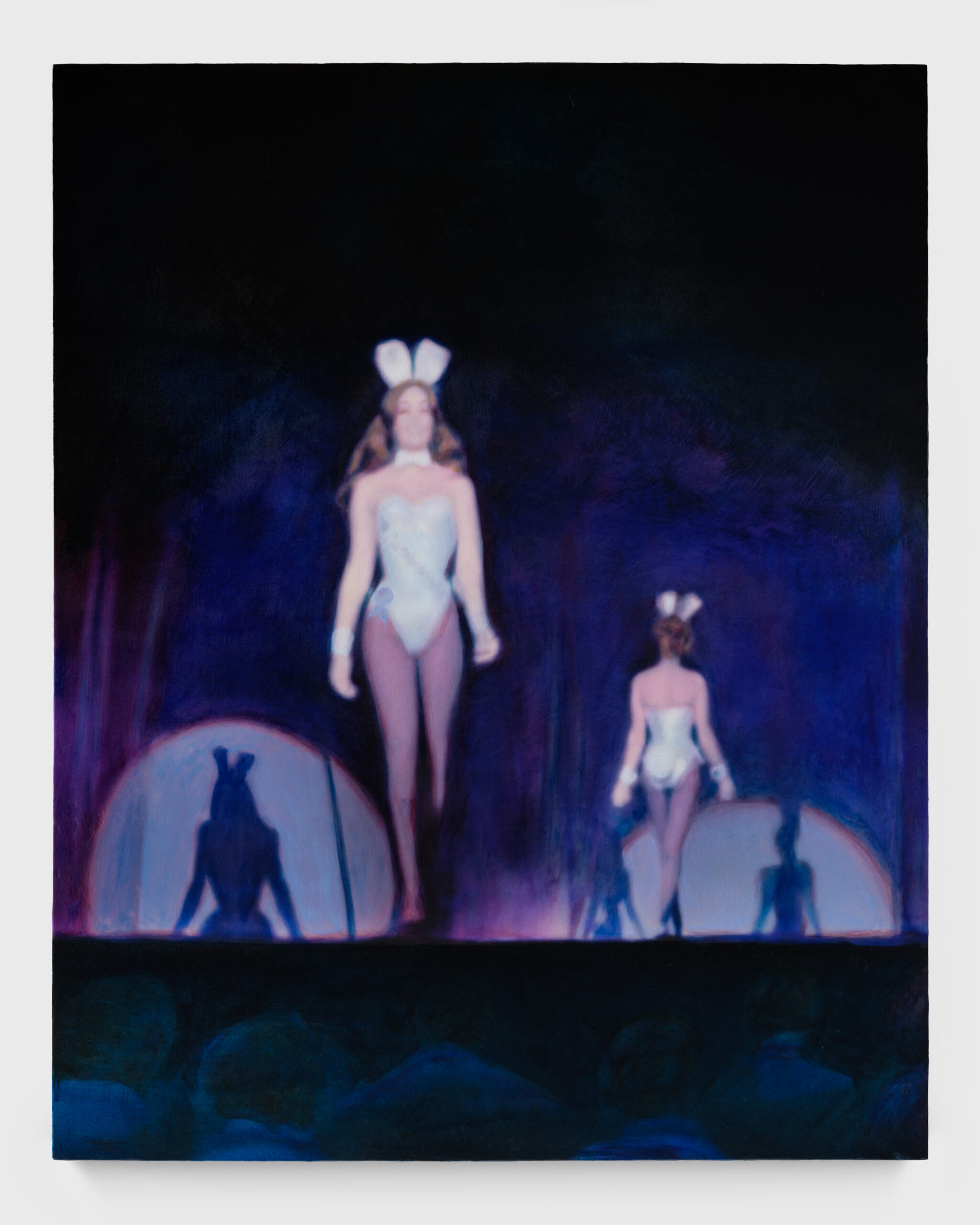
Cristine Brache. Talent Showcase. 32.75 x 26.25 x 1 5/8”. Oil, ink, and encaustic on silk and wood.
BRACHE: Yeah. Sometimes it depends on my mood, too. It’s like, “Today I’m tired of feeling objectified, and I feel all of this is violence, and I don’t like it.” But then other times, it’s like, “Oh, please objectify me..”
STOKŁOSA: Yeah. I feel the same.
BRACHE: That’s normal. Nobody wants to be objectified all the time. I don’t enjoy that, but sometimes it feels nice to be an object of someone else’s affection.
STOKŁOSA: Again, it’s this public and private situation where sometimes you are forced to be in public, but you don’t want to be.
BRACHE: Yeah, you put on the mask and perform it.
STOKŁOSA: So again, we are back in Versailles. You have to be public as a queen, but you’re this ordinary person who has feelings too. It’s not only the beautiful gold front, it’s something behind those horrible stories.
BRACHE: It’s what it takes to make that industry of the castle operate, to make it function on that very high standard of living at that time in particular. Do you have a favorite queen or king that you’re most obsessed with?
STOKŁOSA: I was obsessed with Ludwig II. He ruled in Bavaria in the late 19th century and he was responsible for those fairytale castles in the Alps. One of the Disney castles was inspired by him. It was a very tragic story because he was insane and very shy and probably gay. He was building all those palaces only for himself, he avoided people altogether. Eventually, he was killed by his servants, they drowned him in the lake.
BRACHE: Oh, wow.
STOKŁOSA: I was obsessed with the castles. Some of them were built with very modern techniques but look medieval. One was a copy of Versailles because he was obsessed with Louis XIV. It was basically a monument for him.
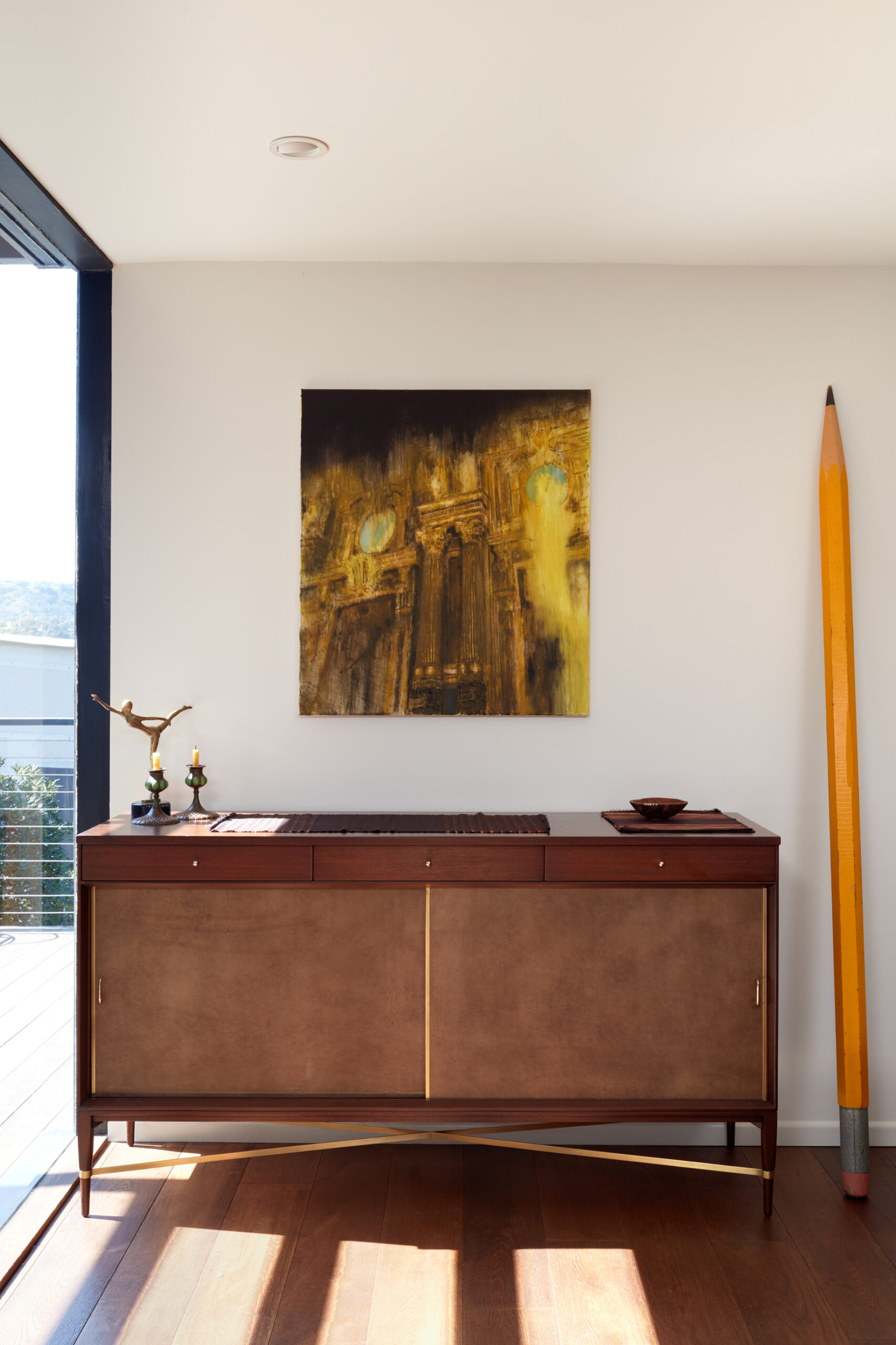
Amity exhibition Beautiful Fish in a Man-Made Pond at the Wohlstetter house designed by Josef Van der Kar, photograph by Evan Walsh.
BRACHE: Have you been there?
STOKŁOSA: Yes, a couple years ago. It’s on an island. It’s an exact copy of Versailles.
BRACHE: That’s wild. Personally I’m obsessed with The Devils of Loudun from France in the 17th century. Ken Russell made a movie about them called The Devils, and there’s a Polish movie about the same nun called Matka Joanna. Her name was Joan. There was a case of possession in the convents and it was an epidemic, way before the Salem witch trials. But French possessions were way more sexual than the Puritanical ones of America. So this nun, Joan, supposedly signed a pact with the devil, Grandier, the mayor of the town. There was a sex pact, and then she started behaving like she was possessed. I mean, she was for sure possessed, but I don’t know by what.
STOKŁOSA: By herself maybe? I watched this Polish movie about her, it was based on the novel by Jarosław Iwaszkiewicz [Mother Joan of the Angels].
BRACHE: Aldous Huxley wrote about it too. That’s the book that Ken Russell’s movie is based on. Ken Russell’s is the campy version, and then the Polish version is more elegant.
STOKŁOSA: Yes. It’s from the ‘50s or ‘60s, it’s black and white.
BRACHE: Yeah. I spent some time in Poland. My ex is Polish, so I was in Szczecin and Krakow. I never went to Warsaw.
STOKŁOSA: I’m from Krakow.
BRACHE: I liked it there.
STOKŁOSA: When was that?
BRACHE: 2011. A long time ago now, just after my graduation. What’s your favorite part of Poland?
STOKŁOSA: Krakow, of course. It has everything that I need. There is an airport, so I can go everywhere. The architecture is nice, and it’s varied in different parts of the city. I have my friends there, so it’s a good place to live. How long have you been in New York?
BRACHE: I’ve been here since COVID, really. I moved from Canada. I was in Canada for four years. Before that, I was in London. I did my master’s there, and before that, I lived in China for two-and-a-half years. Before that, I was traveling around Europe. I was squatting in London, and I was squatting in Greece, and I hitchhiked from Athens to the center of Turkey, and I lived in Turkey for two months. I basically left the US with two-grand and bought a one-way ticket.
STOKŁOSA: Whoa! That’s great.
BRACHE: Yeah. I wound up in China, and I was so broke when I got there. It was crazy, but it was a really great experience. That’s when I was in Poland as well. I spent a lot of time in East Germany and Berlin, all up and down Dresden and Leipzig. I drove through the Alps, and I went to Gruyere in Switzerland. That place also looked like Disney World. It was beautiful, the little villages. It looked fake to me, but it was real.
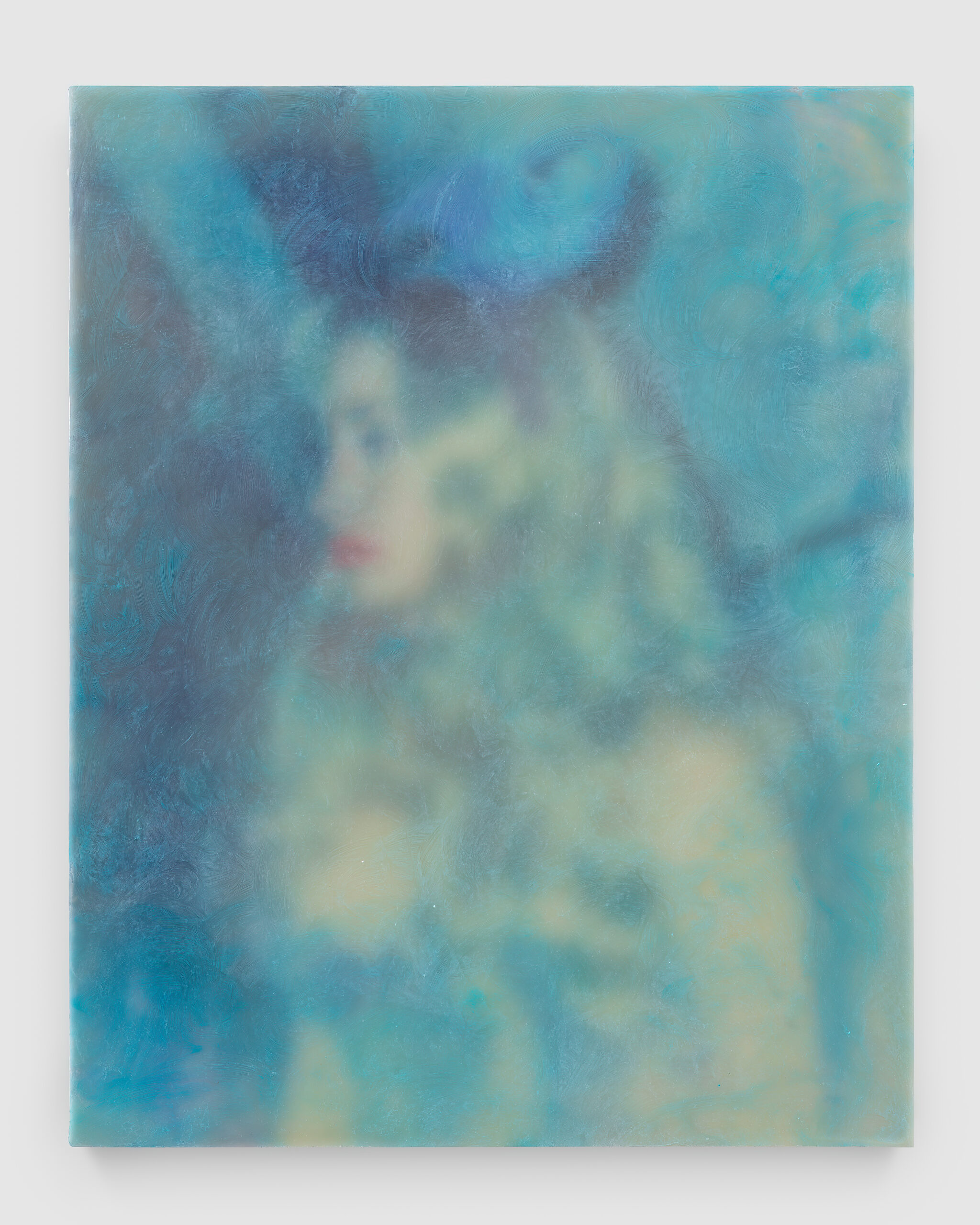
Cristine Brache, Almost Blue. 14 x 17.5 x 1 5/8”. Oil, ink and encaustic on cotton and wood, 2024.
STOKŁOSA: Sometimes all those castles and palaces look fake. You mentioned Dresden. For me it looks like a castle or palace from Beauty and the Beast.
BRACHE: It’s crazy. What are you showing in Los Angeles?
STOKŁOSA: There’s going to be one picture from Dynasty and the other is Armor from Vienna. It’s renaissance armor and it’s gold shiny objects. For me it’s about masculinity and oppression and the situation when you’re wearing this metal object and it’s defining your position and shape of your body. It’s very oppressive but on the other hand, it’s so beautiful and shiny and you are this prince on the horse.
BRACHE: That’s funny. I’m understanding Jed [Moch’s, the curator] thinking more with putting our paintings in the same room, because I am showing those bunny works. The bunny suit is definitely a kind of armor. They used to tie the corsets so tight. I mean, my work’s very feminine and yours is very masculine, but it’s masculine in a soft way. It’s like a non-toxic masculinity. People usually think of masculinity as toxic nowadays, but it’s very beautiful, too. When it’s not toxic.
STOKŁOSA: Yes. Both masculinity and femininity are defined by the same oppressive rules of society. We both are victims of that.
BRACHE: For sure. There’s definitely toxic femininity, too. There’s a yin and yang between our work.
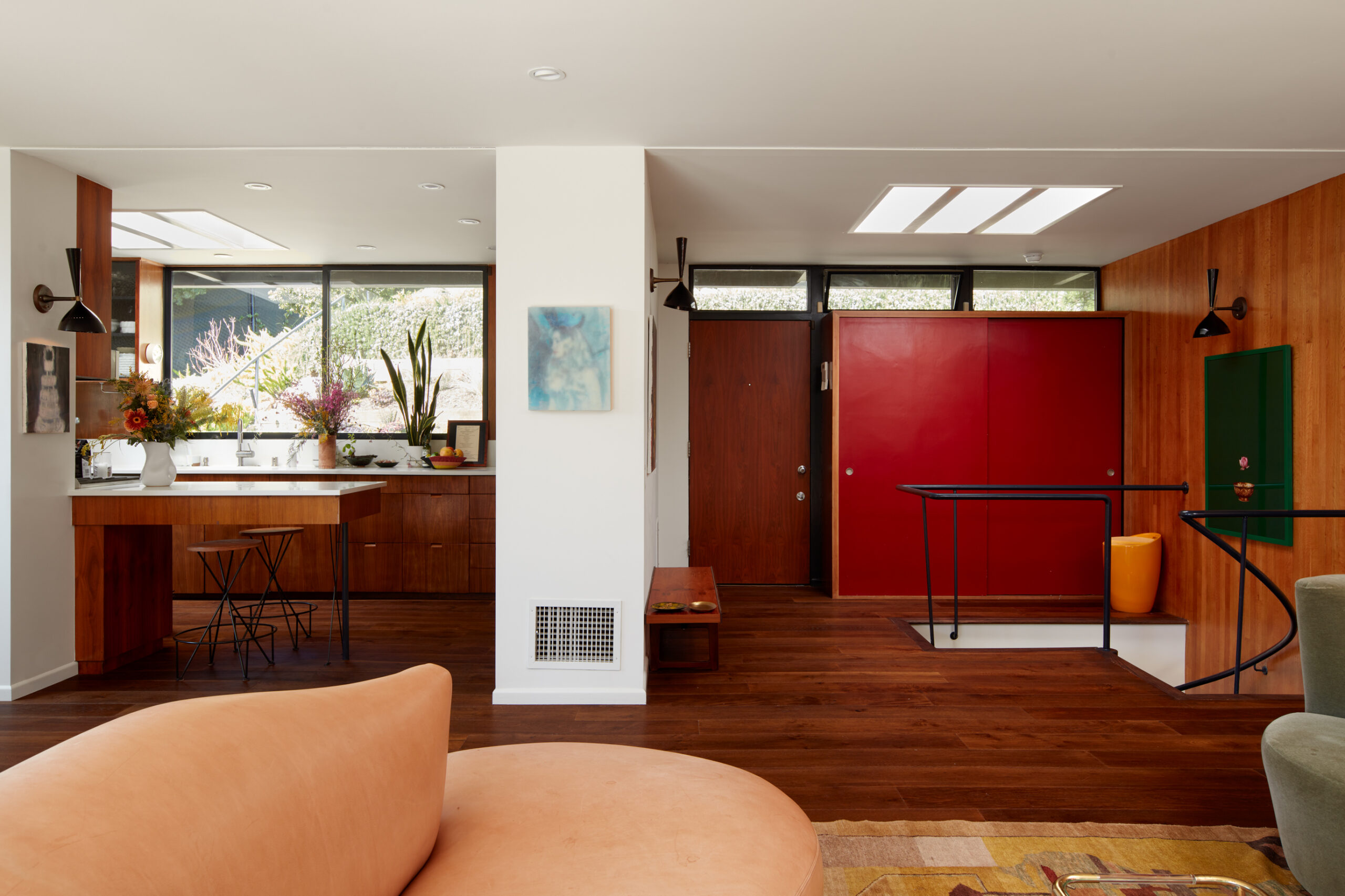
Amity exhibition Beautiful Fish in a Man-Made Pond at the Wohlstetter house designed by Josef Van der Kar, photograph by Evan Walsh.

